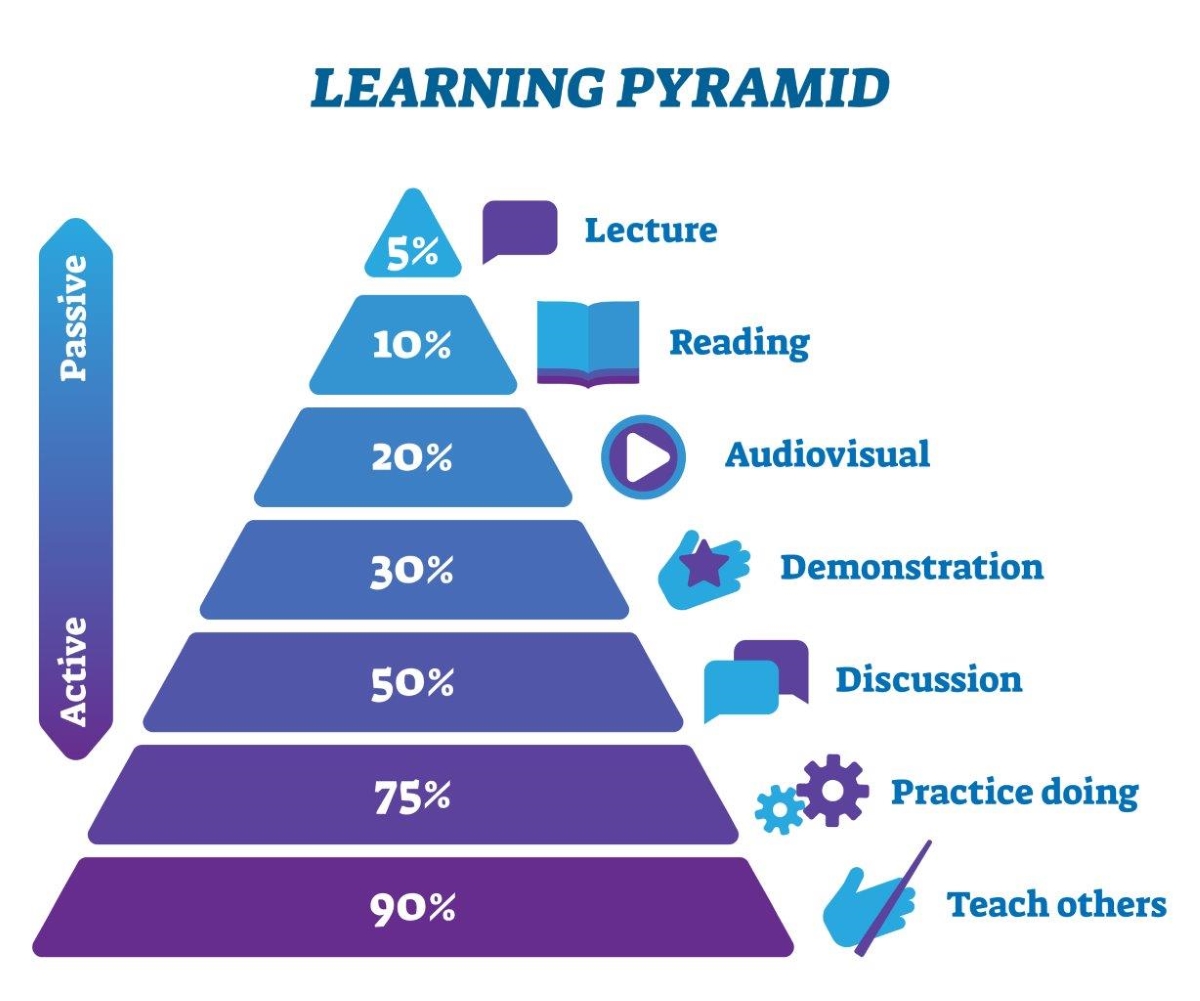What learning methods work best?
February 1, 2022
When thinking about highly effective learning methods, what is frequently cited is the learning pyramid developed by NTL (National Training Laboratories Institute for Applied Behavioral Science) in the 1960s, which shows that different learning methods have different rates of memory retention.
The “learning pyramid”, sometimes referred to as the “cone of learning” suggests that most students only remember about 10% of what they read from textbooks, but retain nearly 90% of what they learn through teaching others.
The following resource give the retention rate for various study methods.

The amount that can be memorized merely by listening to a class is low. So try using your body as much as possible and combine reading, watching, writing, discussing, role playing, and so on.
Also, you probably already found a study method even more effective than role playing. It’s “teach others”. You can’t teach something very effectively to another person if you don’t know it very well. In other words, it’s necessary to understand the subject well in order to teach it effectively to another person. The study method that utilizes this principle is called “teach to learn”. Please try to teach another person (or even yourself) what you’ve learned. There are various methods you can use. You can collect all the points you’ve learned and make your own original textbook or you can upload what you’ve studied to SNS.
*To be precise, I would like to add that there are some criticisms for this learning pyramid that is not well-founded. However, many instructors who have been involved in language education for many years feel that different learning methods have different effects, and many of them support this. Also, since active learning is said to be effective, I thought it would be helpful to introduce it here based on my actual experience, although it may not be an accurate resource.
Categories
Recent Posts
- I cannot keep up with meetings conducted in Japanese. Are there any good ways to study?
- Are there any good writing materials for business Japanese? (Three keys to developing business Japanese writing skills.)
- Are there any free materials available for studying business Japanese reading?
- Should I read newspapers for reading practice in business Japanese?
- Are there any good business magazines to practice reading business Japanese?
Archives
- August 2022
- June 2022
- May 2022
- April 2022
- March 2022
- February 2022
- January 2022
- October 2021
- January 2021
- August 2020
- July 2020
- June 2020
- May 2020
- April 2020
- March 2020
- February 2020
- January 2020
- December 2019
- November 2019
- October 2019
- September 2019
- August 2019
- July 2019
- June 2019
- May 2019
- April 2019
- March 2019
- February 2019
- January 2019
- December 2018
- November 2018
- October 2018
- September 2018
- August 2018
- July 2018
- June 2018
- May 2018
- April 2018
- March 2018
- February 2018
- January 2018
- November 2017
- October 2017
- July 2017
